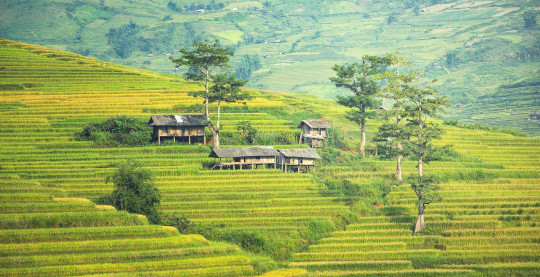Pedro Calderón de la Barca? Craufurd Tait Ramage? Denis Florence MacCarthy? Stephanie Tourles? Apocryphal?

Question for Quote Investigator: Metaphorically, the deity has flung a bucket of green at our world which has brought forth its loveliness. The primary color of Earth is green because of its beautiful foliage. The Spanish dramatist and poet Pedro Calderón de la Barca wrote on this theme. Would you please explore this topic?
Reply from Quote Investigator: Pedro Calderón de la Barca died in 1681. A collection of his works including “La Vanda, y la Flor” (“The Scarf and the Flower”) appeared in print in 1726. The crucial quotation was spoken by a character named “Lisi” (or “Lisida”). Here is the original Spanish. Boldface added to excerpts by QI:1
Lisi: Yo asi prosigo:
la verde, es color primera
del Mundo, y en quien consiste
su hermosura, pues se viste
de verde la Primevera:
la vista mas lisonjera
es aquel verde ornamento,
pues sin voz, y con aliento
nacen de varios colores
en cuna verde las flores,
que son estrellas del viento.
In 1853 Irish poet and translator Denis Florence MacCarthy published “Dramas of Calderon: Tragic, Comic, and Legendary” which included “The Scarf and the Flower”. MacCarthy performed a loose English translation designed to maintain rhyme and meter:2
LISIDA.
I thus proceed:
Green is the colour God doth fling
First on the naked world, a dress
Which doth increase its loveliness—
It is the colour of the spring.
The fairest sight the seasons bring
Is that green ornament that sees.
Voiceless and breathless ‘neath the trees,
The many-tinted flowers take birth
On the green cradle of the earth—
The trembling stars of every breeze.
“God” and “fling” were not present in the original Spanish text.
Below are additional selected citations in chronological order.
In 1868 Scottish anthologist Craufurd Tait Ramage published “Beautiful Thoughts from German and Spanish Authors”. Ramage included a more direct English translation of the Spanish passage:3
Lisida.—Green is the prime colour of the world, and that from which its loveliness arises; it is the colour of the spring; the fairest sight is that green ornament that sees, voiceless and breathless, the many-tinted flowers take their birth in their green cradle—the trembling stars of every breeze.
Interestingly, Ramage titled the section “Green Is the Colour Which God Flings On the World”. Perhaps this title was inspired by the previous translation.
In 2007 the instance above appeared in the book “Organic Body Care Recipes” by Stephanie Tourles:4
“Green is the prime color of the world, and that from which its loveliness arises.”
Pedro Calderón de la Barca,
Spanish Dramatist and Poet
In 2015 the instance above appeared in “Chicken Soup for the Soul: Be The Best You Can Be” edited by Amy Newmark and Milton Boniuk.5
In conclusion, Pedro Calderón de la Barca penned the pertinent text in Spanish within the tale “La Vanda, y la Flor” (“The Scarf and the Flower”). A loose English translation by Denis Florence MacCarthy appeared in 1853, and a more accurate rendering from anthologist Craufurd Tait Ramage appeared in 1868. The latter version continues to circulate today.
Image Notes: Picture of houses in an agricultural village from sasint at Pixabay. Image has been resized and cropped.
Acknowledgement: Great thanks to Beatrice Groves whose inquiry led QI to formulate this question and perform this exploration.
Update History: On March 18, 2025 the format of the bibliographical notes was updated.
- 1726, Octava Parte De Comedias Verdaderas Del Celebre Poeta Español D. Pedro Calderon De La Barca, (Eighth Part Of True Comedies Of The Celebrated Spanish Poet D. Pedro Calderon De La Barca), La Vanda, y la Flor (The Scarf and the Flower), Start Page 288, Quote Page 301, En Madrid: En casa de la Viuda de Blàs de Villanueve, año de 1726. (Google Books Full View) link ↩︎
- 1853, Dramas of Calderon: Tragic, Comic, and Legendary by Pedro Calderón de la Barca, Translated from the Spanish principally in the metre of the original, by Denis Florence M‘Carthy, Volume 2 of 2, The Scarf and the Flower (La Banda y la Flor), Start Page 261, Quote Page 297. Charles Dolman, London. (Google Books Full View) link ↩︎
- 1868, Beautiful Thoughts from German and Spanish Authors by Craufurd Tait Ramage, Green Is the Colour Which God Flings On the World, The Scarf and the Flower, Act I. sc. 2., Start Page 488, Quote Page 490, Edward Howell, Liverpool, England. (Google Books Full View) link ↩︎
- 2007 Copyright, Organic Body Care Recipes: 175 Homemade Herbal Formulas for Glowing Skin & a Vibrant Self by Stephanie Tourles, Quote Page 41, Storey Publishing, North Adams, Massachusetts. (Google Preview) ↩︎
- 2015, Chicken Soup for the Soul: Be The Best You Can Be: Inspiring True Stories about Goals & Values for Kids & Preteens, Edited by Amy Newmark and Milton Boniuk, Section: Being Grateful, Chapter: The Color of Gratitude by Bailey Corona, (Quotation appears as epigraph of chapter), Unnumbered Page, Simon and Schuster, New York. (Google Books Preview) ↩︎